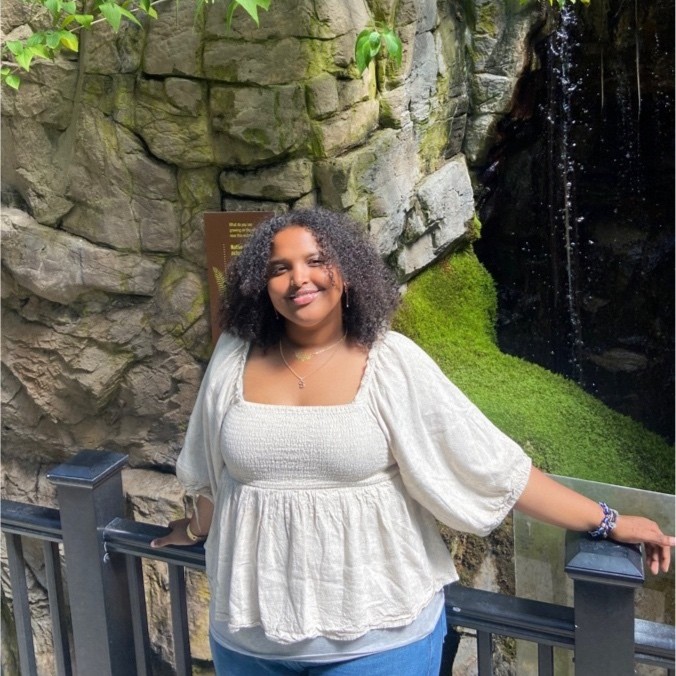
The symposium had an endless crowd from start to finish
Photo by Sagel Gurreh
On April 17, 2024, the university hosted the 28th Annual Symposium on Undergraduate Scholarship and the 8th Annual Graduate Research Forum, where university students displayed their original research projects and showcased their scholarly activities.
The symposium, featuring presentations from students across various academic disciplines, was attended by students, faculty, staff and families.
The symposium day is both an exciting and nerve-wracking experience for students. Most professors cancel class for the symposium to give students and faculty an opportunity to attend this event.
The symposium was hosted in the Capital Center, following the Honors Convocation, where students were recognized for their scholarship and leadership qualities, along with faculty members honored for teaching excellence.
Both undergraduate scholars and graduate researchers at the university shared their accomplishments through formal oral and poster presentations from 11:30 a.m. to 1 p.m., followed by presentations in Battelle Hall, Blackmore Library and Ruff Learning Center from 1:30-4 p.m.
While the Capital Center had many people up on their feet throughout the entirety of the session, not many took time to sit, eat and unwind. The oral presentation rooms were packed to the brim, with almost all seats filled in each room.

Many student scholars shared their research findings, the importance of this symposium and their experiences preparing for their presentations.
Victoria Bennet and Hannah Riley, senior nursing students, presented research they found while working at the OSU James Oncology Comprehensive Center.
Bennet said, “The floor [on-site at OSU James] we were on was specifically a surgical oncology. We did our research on how chlorhexidine gluconate bathing for oncology patients and how that reduces a type of infection called CLABSI. CLABSI stands for central line-associated bloodstream infections.”
Bennet added the importance of sharing their research with the attendees.
Bennet said, “They aren’t aware of what a central line is. So it might be a little bit kind of new for people to understand, but it’s also nice that we have this presented here to get this idea out to the public and other people.”
Hannah Acheampong, senior biology major, focused their project on identifying fungi, understanding them in non-digital areas of Ohio. They shared that there is so much about fungi and mushrooms that we have yet to know about.

They used many processes to identify the fungi using DNA extraction and polymerase chain reaction (PCR), “a laboratory technique for rapidly producing (amplifying) millions to billions of copies of a specific segment of DNA,” to help get DNA barcodes to identify what type of fungi it is.
Acheampong shared how this research is important for our society in this day and age.
Acheampong said, “I’m a biology major and I think one thing that we keep in mind, like whether you’re a biology major or not, like looking at the environment, there’s many things that we do not know….so many people talk about mushrooms, especially for things like natural remedies and so forth and if we know more about them, you know, we can actually potentially help our environment and help us as well.”
Some attendees shared their favorite presentations.
“I found the women of color self-perception poster very interesting,” Sabririn Qasim said. “They hypothesized that women of color saw themselves as, you know, less beautiful than other women in this like Eurocentric like views of women and what’s beautiful, but then when they interviewed them, they found that women of color actually perceived themselves better in a more positive view than any other like races or color.”
Qasam took away from the presentation that “women of color see themselves in a very good light and people think that they don’t.”

Paige Wallace, a senior biology major, did one of the oral presentations. She did a performance from her acting class on Amelia Earhart and her final flight voyage.
Wallace said, “I just thought this was cool because it kind of showed the struggles that she had along the way. It talks about different nicknames that she had growing up and kind of the sexist undertones of a lot of those and how she was able to push past it and forge her own path.”
To feel prepared for the day, Wallace engages in “lots of practice days before this and getting ready, but I always feel good. Once I start, I always feel good. I’ve done the symposium a few times before with my research for biology.”
The Research Symposium at the university was a great chance for students to display their efforts and research accomplishments, as well as reflect on the obstacles they’ve faced. With student presenters interacting with a variety of projects spanning from medical studies to societal views, the event acted as a place for sharing new ideas.


